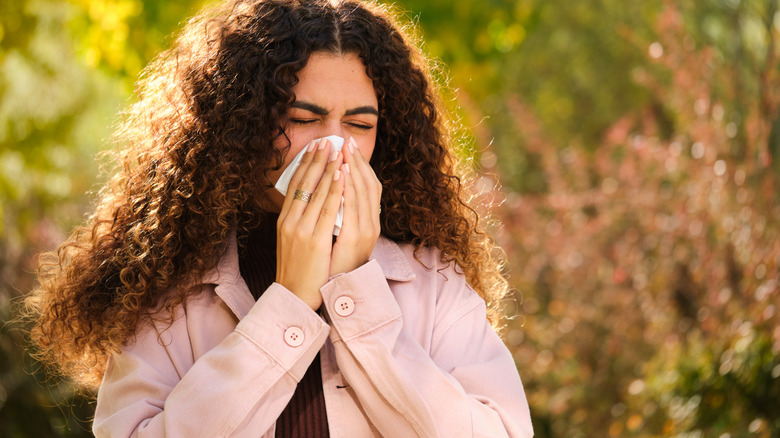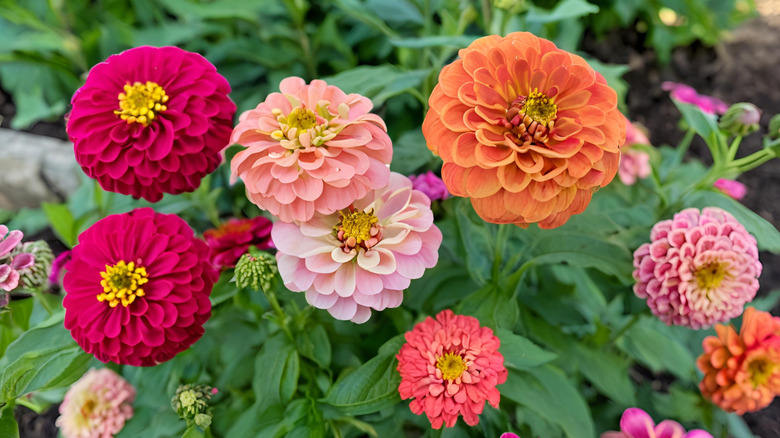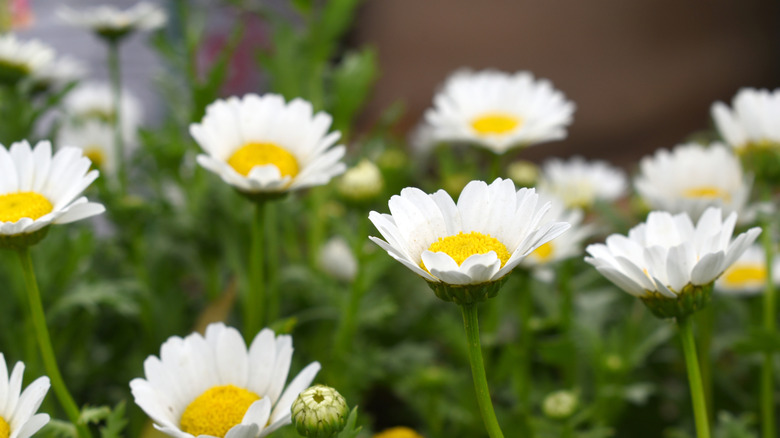What Is An Allergy-Friendly Garden And Should You Consider Planting One?
There's nothing better than a spring day out in nature — unless you suffer from allergies, in which case there's nothing worse. Around a quarter of adults and 18.9% of children in the U.S. have seasonal allergies, with pollen being a leading trigger. Some cities are worse for allergies than others, and you can't control the amount of pollen in your neighborhood — but you can control your own garden, creating an allergy-friendly refuge to enjoy nature year-round.
Pollen grains are produced by the male parts of plants to fertilize and reproduce. Trees, grasses, and weeds are the biggest culprits when it comes to triggering allergies, and thanks to climate change, pollen seasons are getting longer and longer. However, not all plants are equal in this regard. Different plants produce different types and amounts of pollen, and some barely trigger allergies at all.
To create an allergy-friendly garden, only use plants that produce a lower amount of pollen, as well as those that don't disperse pollen in the wind. Both types are likely to be gentler on your allergies. Dr. Tania Elliott, MD, FACAAI, shared tips on creating an allergy-friendly garden exclusively with House Digest, including the best plants to include, as well as whether you should consider planting one.
Plants to help you make an allergy-free garden
According to Dr. Elliott, who spoke to House Digest exclusively, creating an allergy-friendly garden is definitely worth the effort "if you suffer from outdoor allergies." But first, Dr. Elliott noted that "knowing what you are allergic to matters," because pollen seasons vary by type of plant. Tree pollen season is from March to May, grass pollen season is mid-May to end of July, and weed pollen season lasts from August until the first frost, Dr. Elliott shared.
When choosing plants, "prioritize low pollen and insect pollinated plants" over wind-pollinated ones, Dr. Elliott advised, continuing, "Opt for brightly colored flowers that attract birds and bees, such as snapdragons, zinnias and petunias. These plants are less likely to release pollen into the air." The insects do the work of spreading pollen for these plants instead, which also means they don't have to produce as much pollen as those that use the wind. Snapdragons, zinnias, and petunias are all popular garden flowers that are usually grown as annuals. You've got many more allergy-friendly flowers to choose from as well — Dr. Elliott highlighted hydrangeas, roses, tulips, geraniums, daffodils, lilies, begonias, pansies, impatiens, and azaleas, especially double-flowered ones. For herbs, she recommended basil, chives, or parsley.
Plants to avoid
Designing an allergy-friendly space also means avoiding plants that produce a lot of pollen at all costs. Remember that grasses are among the main triggers, so avoid these plants if you deal with allergies. "Use gravel or mulch where you can over grass as grass is very allergenic, particularly Timothy grass, Bermuda, Johnson, orchard, sweet vernal, [and] perennial rye," Dr. Elliott told House Digest exclusively. And weeds are a definite no-go. "Remove weeds [as soon as possible] especially ragweed cocklebur, Russian thistle, pigweed, [and] lambs quarter," she said.
Before planting any trees, check their potential for pollen. Many common trees are among the most likely to cause allergies, Dr. Elliott said, including alder, ash, aspen, beech, birch, cedar, cottonwood, elm, hickory, red/silver maple, mulberry, oak, olive, pecan, pine, poplar, sycamore, and walnut. A few flowers that are the worst for allergies are chrysanthemums, daisies, and sunflowers.
Other things in the garden can cause allergy symptoms as well, like mold and animal dander. "Avoid overwatering to prevent mold growth, change clothes and shower after gardening," Dr. Elliott recommended. She also advised wearing a mask or nasal filters as you garden.


